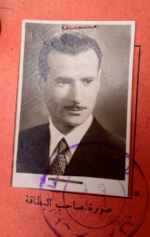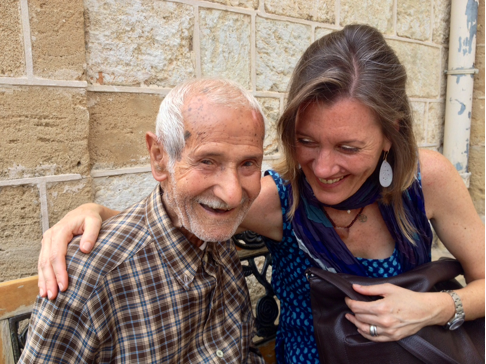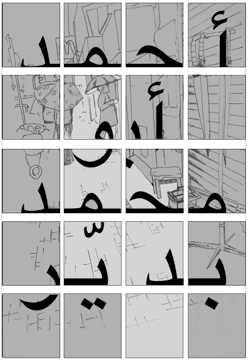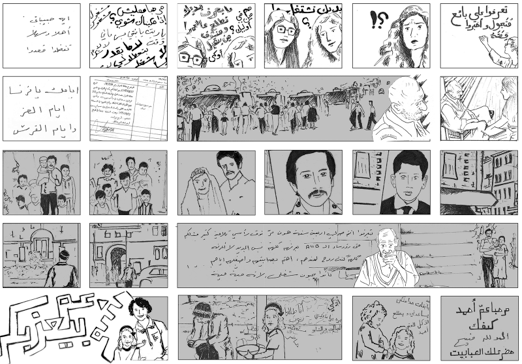Hamra Street is possibly Ras Beirut’s most renowned street, its name so often interchanged with Ras Beirut to designate the neighborhood. However, a few blocks north, Bliss Street rivals Hamra as the defining east-west axis of Ras Beirut’s urban grid. Bliss Street perhaps best embodies the characteristics of Ras Beirut’s association with an educated multi-confessional middle class, while its name signifies its historic tie to the American University of Beirut (AUB). After the First World War, Beirut’s Mayor Omar al-Daouk named the street in honor of AUB President Howard Bliss. In today’s Ras Beirut, Bliss Street is still green and open to the sky on one side by virtue of its delineation of the campus grounds. That side, lined with low college buildings, seamlessly ties Ras Beirut to AUB, marking the character of one upon the other. The other side of the street, formerly dotted with red-roofed stone residences, innumerable barber shops, bookshops, sandwich shops, and famous restaurants is today chockablock with a crammed row of fast food joints to feed the growing population, university and otherwise. Flocking to enjoy a quick bite, looking for a place to park, or later in the evening, just cruising, these crowds transform Bliss Street into a constant traffic jam. Its social fabric much changed, today Bliss Street is peopled less with local residents, and more with visitors and commuters from other parts of Beirut and beyond to work and/or study in Ras Beirut. Still, Bliss Street denotes the edge of the intramural and extramural worlds that comprise Ras Beirut: the inner world of the walled AUB campus nestled within the world of Ras Beirut, outside those walls. Indeed, Bliss Street also connects Ras Beirut with downtown Beirut to the east, while to the west it wraps down the hill to merge with the seaside Corniche, and hem AUB in. The tramway that once clanged up and down Bliss Street extended it from the lighthouse, the Manara, to the heart of the city at Bab Idriss. The tramway, long out of commission, stopped running in 1963. In the past ten years, new high-rise buildings, greedy for the sunset view, walled the Manara off from the sea. And Bab Idriss, destroyed during the Lebanese Civil War, lost its soul after the war in the post-war gentrification plan of the Lebanese Company for the Development and Reconstruction of the Beirut Central District (otherwise known as Solidere). Yet, Bliss Street still works to intersect and connect Ras Beirut with the university, the city, and the sea, acting as the very lifeline of Ras Beirut.
It is, of course, people that breath life into city landscapes in the way they use the space as residents, visitors, and workers. Until very recently, one reassuring mark of stability and continuity on Bliss Street was the presence of Abu Muhammad, the shoeshine man. For close to eighty years, he graced Bliss Street with his warm and friendly presence. Working everyday except Sunday, Abu Muhammad passed away over the summer of 2014, one year shy of his ninetieth birthday. Today, his absence on Bliss Street is all the more conspicuous in his vacant post across the street from AUB’s Main Gate in front of what used to be the legendary Fayssal’s Restaurant (now McDonalds). Modest and kind, Abu Mohammad was not only a reassuring sight and site of everyday normalcy, but he also represented a living tie with the lore of mid-20th century Bliss Street with Faysal’s and Uncle Sam’s Restaurants, and a clientele that included AUB President Bayard Dodge. Even though Abu Muhammad is no longer on Bliss Street, his voice and snippets of his life story will always be a part of Ras Beirut and AUB. On June 4, 2014, Abu Muhammad cheerfully agreed to be interviewed for AUB’s Neighborhood Initiative Ras Beirut Oral History Project. Extracts of the interview are woven together below to pay a small tribute to Abu Muhammad of Bliss Street of Ras Beirut. We also feature his identity card photograph, a photo of Abu Muhammed in AUB, a poem written by one of his clients, Norbert Hirschhorn, entitled “Abu Muhammad, God Preserve,” and a comic strip by Sarah Kichli, graphic design student at AUB who illustrated a conversation she had with him as part of a class assignment with Lina Ghaibeh.
My name is Ahmad, my son is Muhammad, I am Ahmad Budeir. I was born in 1925. I was born outside Beirut, in the South, in Nmeirieh near Nabatiyeh, inland from Saida. We came, my father was a farmer of the land, we were five or six children. We came and lived near Abou-Taleb on Hamra. On Tannoukhieh street above Caracas. I was eleven or twelve years old when I first came here. I remember everything. The place I used to sit, the restaurant of Toufic Fayssal, Abu-Fuad. My place was right there. He was famous. He died, everything changed, it always changes. He was famous because he was respectful, and his customers came to him because he was a good man. On Bliss, I knew Dodge, Mr. Bayard. He used to come to me. This is Bliss Street. There were Michel Shwayri, Dr. Dabaghi, Michel Shamma’a—I knew his grandmother, she was famous, she was a mid-wife. I have six girls and two boys. I got married at the age of 17, my wife is Sa’ada from the Hamadeh. I work everyday. But not Sunday! Relax… I see the grandchildren and friends. I enjoy people, to be with people. My customers were mixed. AUB was good, useful to all, the university and hospital, biggest in Lebanon. I did two operations, Dr. Suhail Bulos, a surgeon, I saw them all through their graduation. Ras Beirut’s mix, coexistence. We are all children of God. The differences are made by parties. Ras Beirut is exceptional, [different] from any other place—the learning and culture, and the people. I remember the University and its work. Everything changed. The shoes are slippers today! Before the war, they dressed much better. Marwan Hamadeh, Walid Joumblatt, Tahseen Khayyat, they used to come to me. There was me and two others [shoeshine men]… two Shiites, two Sunnis, and two Christians. We were [shoeshine men] from each sect on Bliss, from AUH to the Manara. You had an understanding. They are all gone. I was the youngest one. One named Omar. My Uncle Hassan taught me. They all passed away. I’m the last of this thread.
* * *
Abu Muhammed—God Preserve
My right foot up on the shoeshine caddy,
his brush removes construction dust. He dabs
on creams with an ice-lolly stick,
spreads by sponge, then
taps under the toe… 85 or so,
tiny, belt high on flat waist, white frond of hair,
lit cigarette, on a low stool in the sun
in front of the campus main gate where for decades
he’s polished shoes of presidents, profs – and students,
when they wore leather
… tap for the left wingtip’s
turn, followed by wax spread and smoothed by his
fingers, tap, right wingtip waxed, then a two-
handed brushing like squirrels chasing around
and over to reveal the high gloss, and
with a motley cloth, snap!
his masterwork.
[Poem by Norbert Hirschhorn]

[Abu-Muhammad, identity card photograph. Photograph courtesy of Maria Bashshur Abunnasr]

[Abu-Muhammad, 4 June 2014, in front of AUB’s cafeteria. Photograph courtesy of Cynthia Myntti]




[Illustrations by Sarah Kichli]